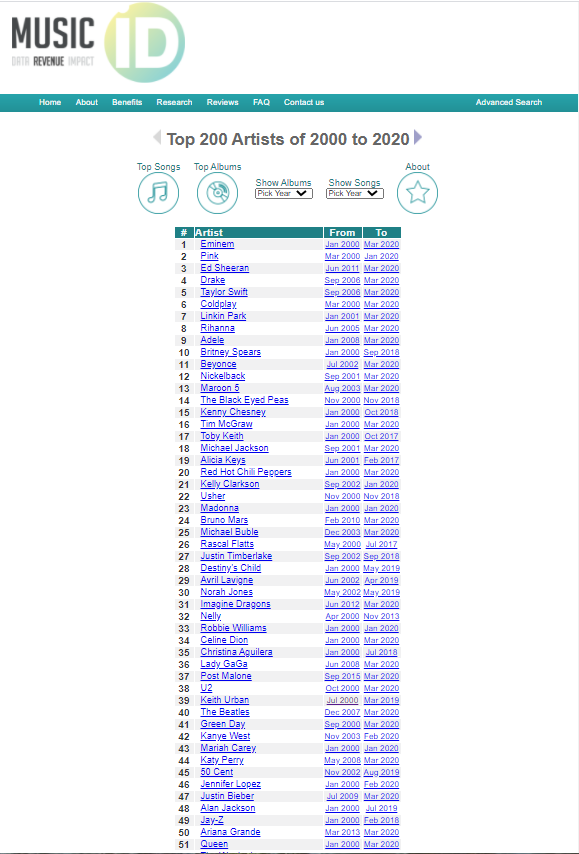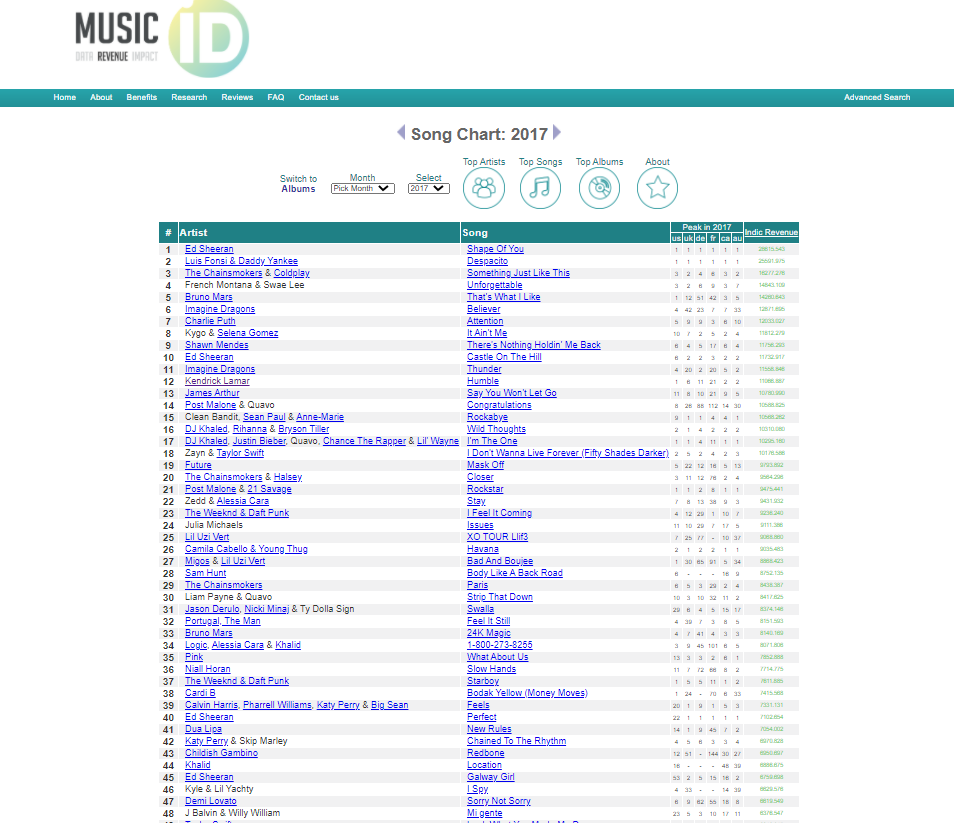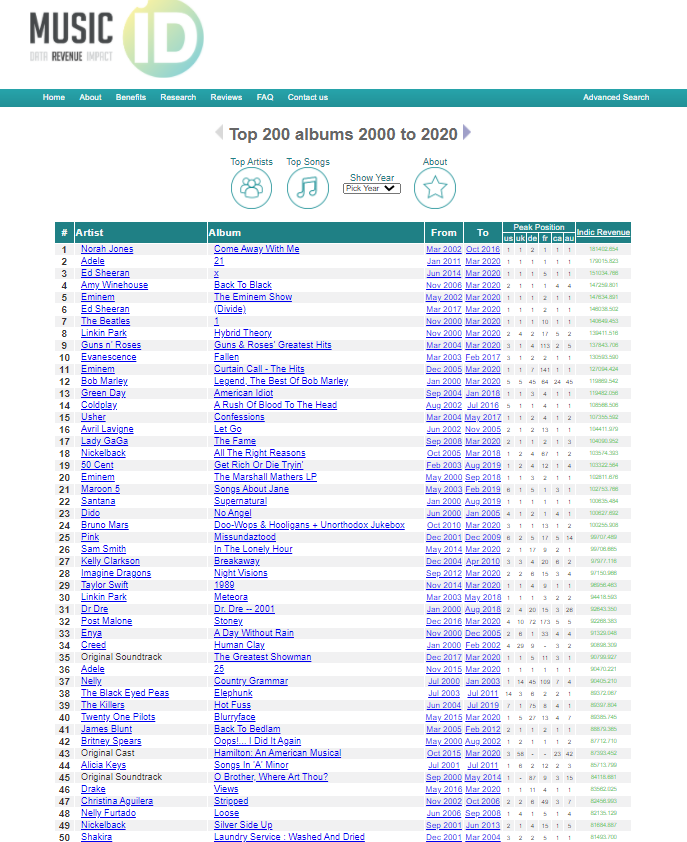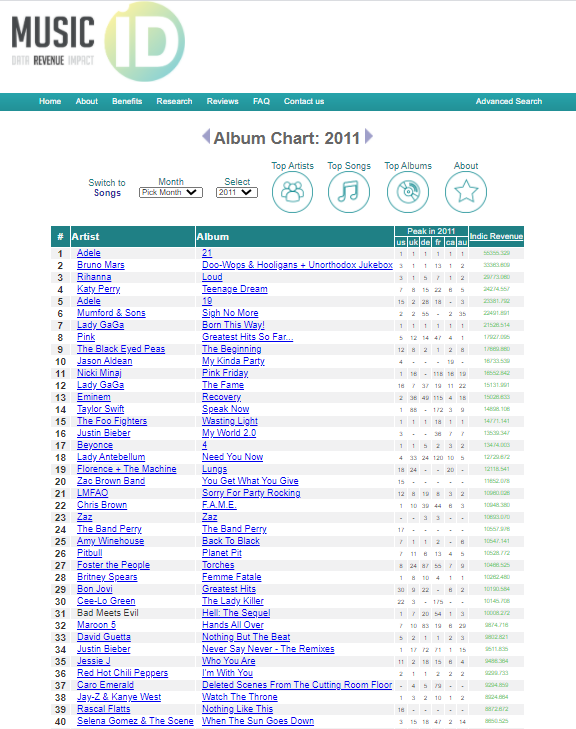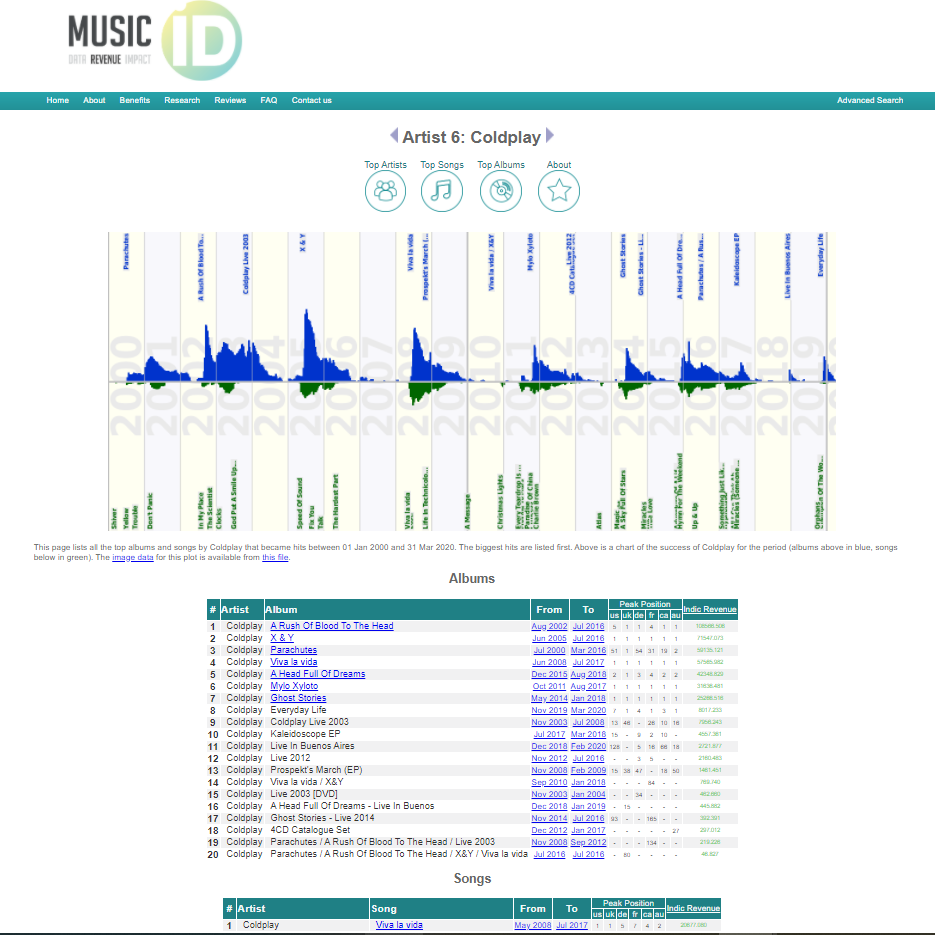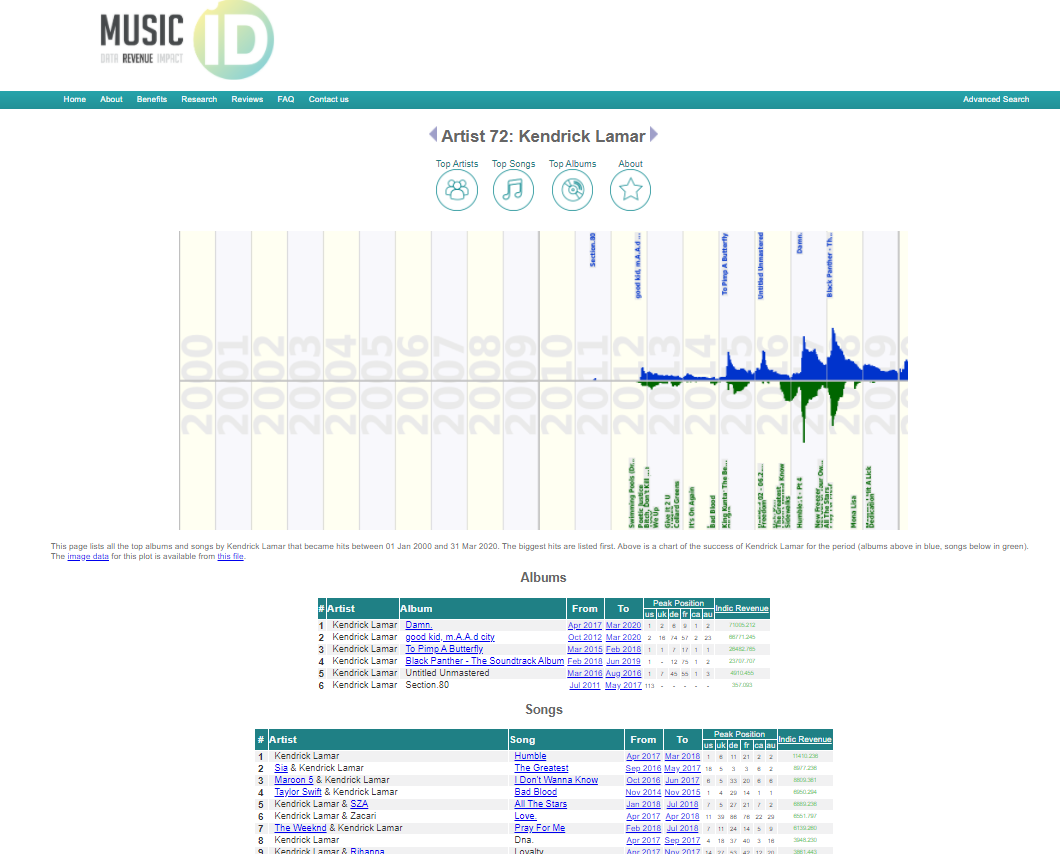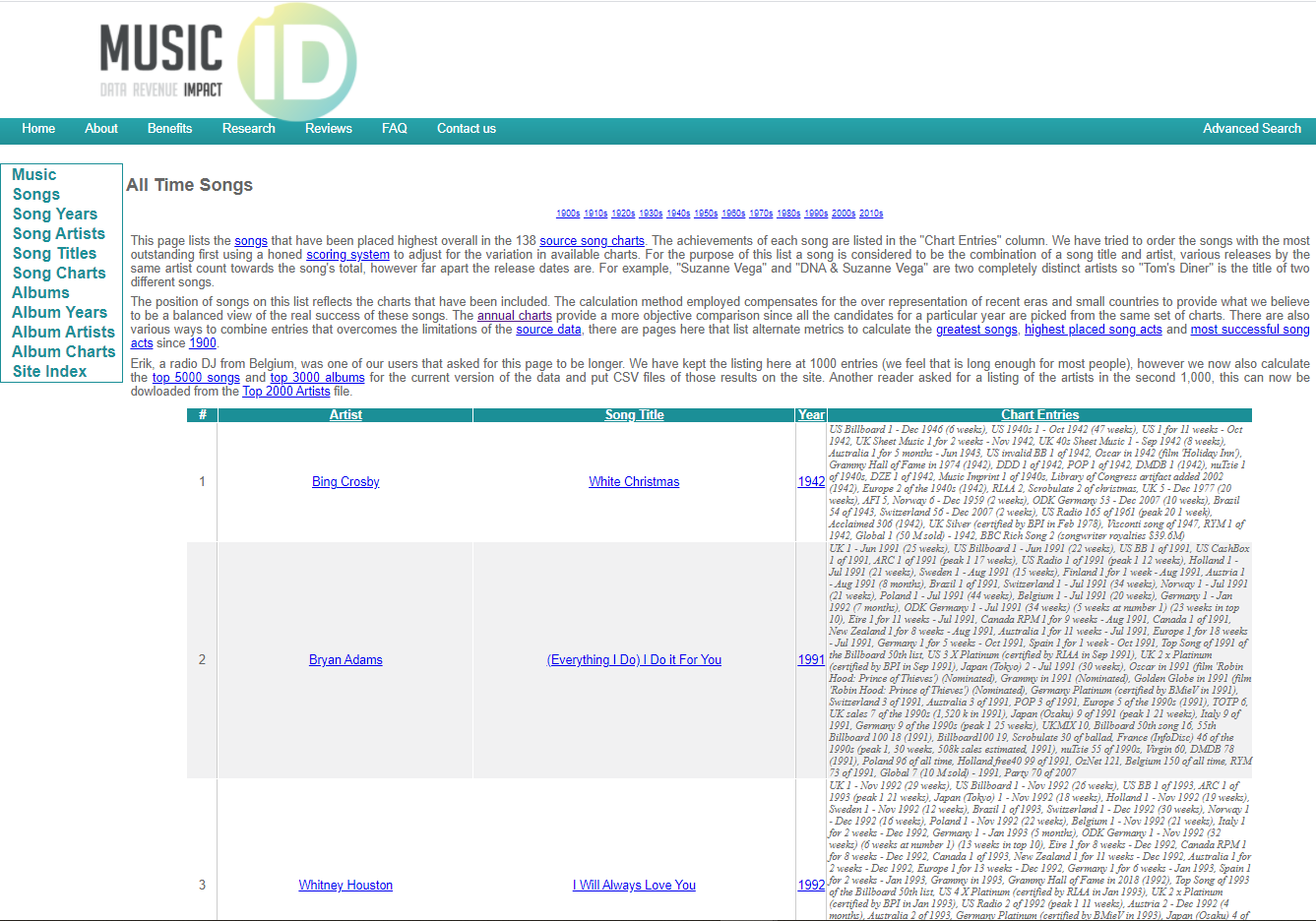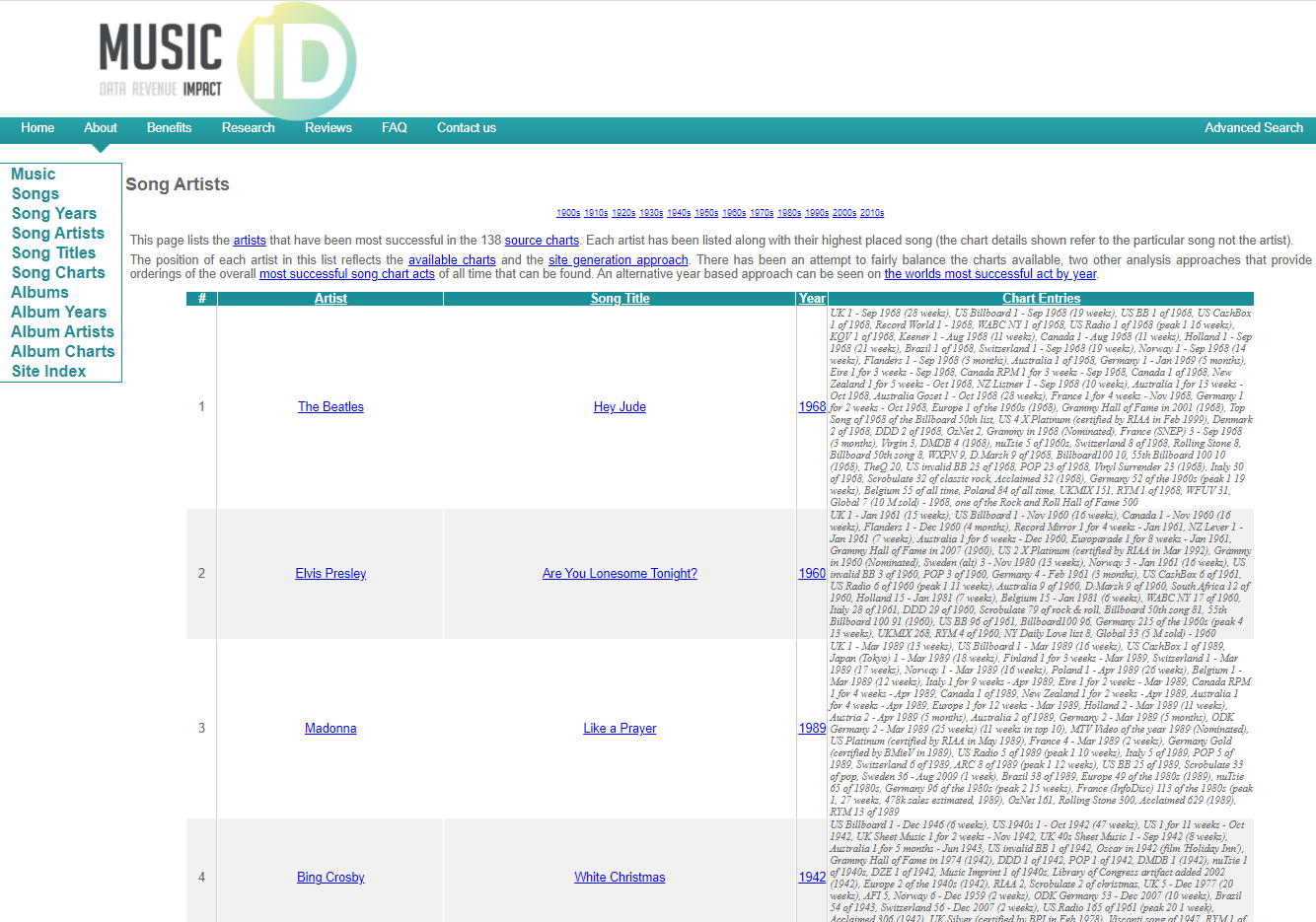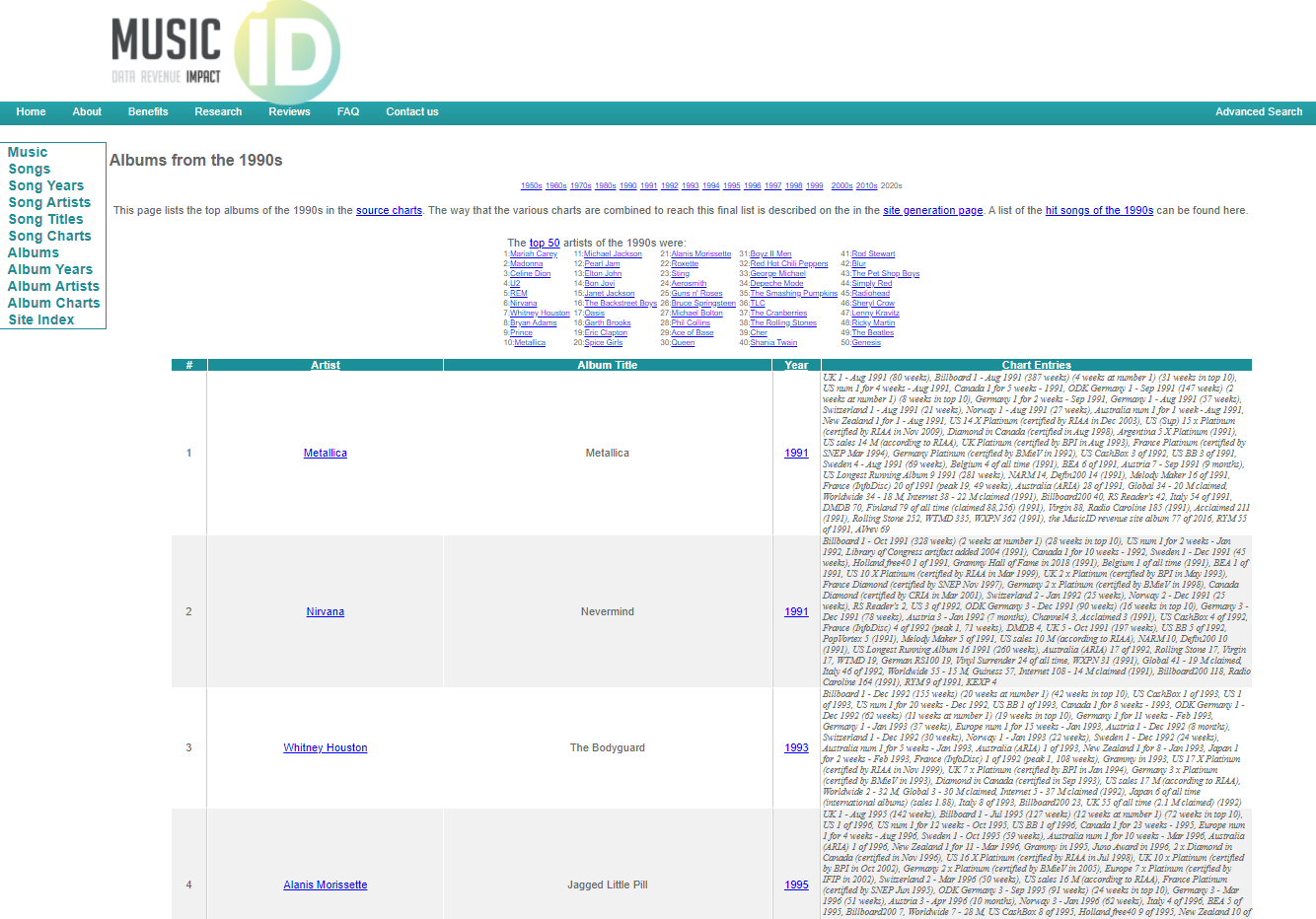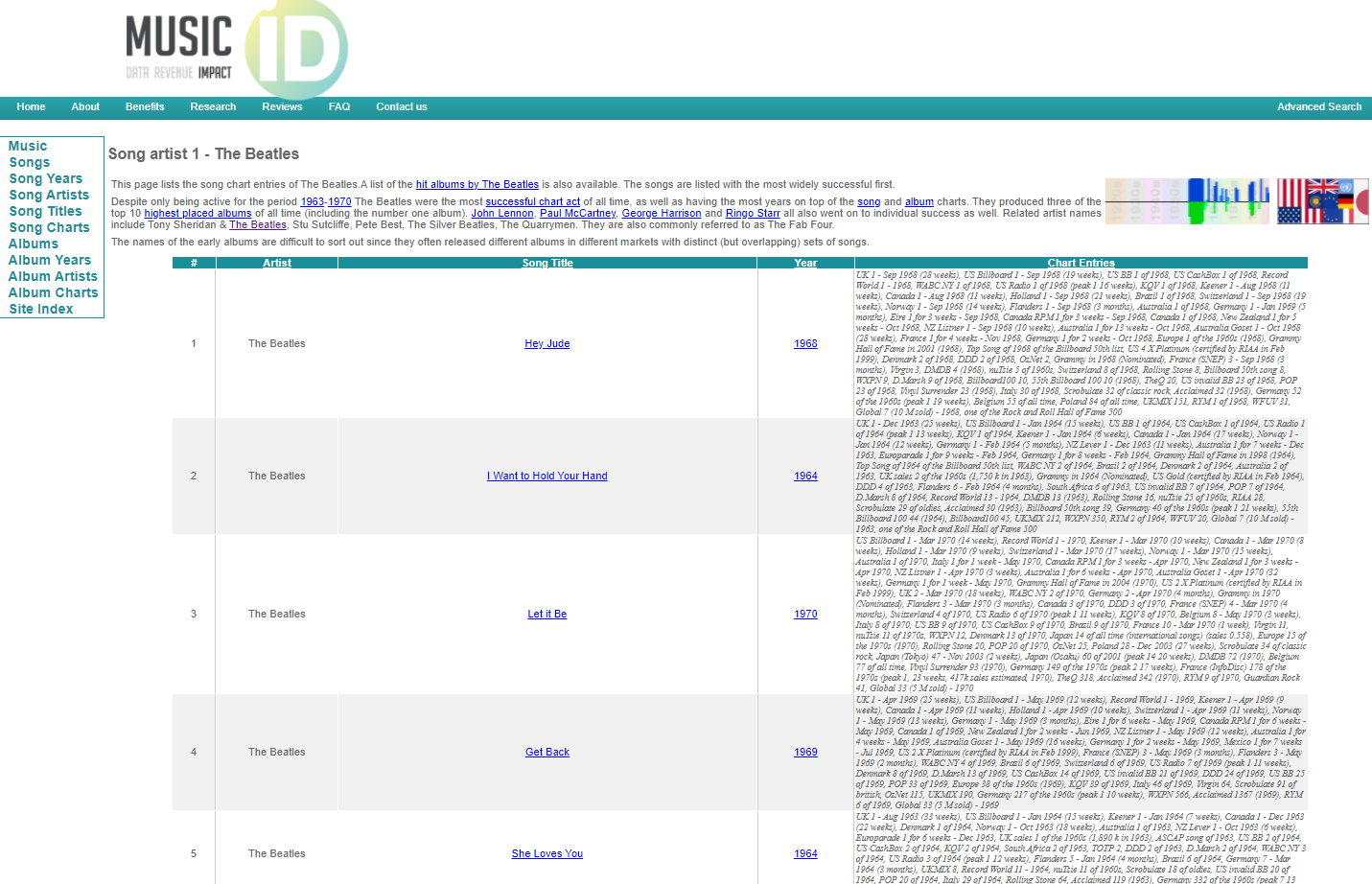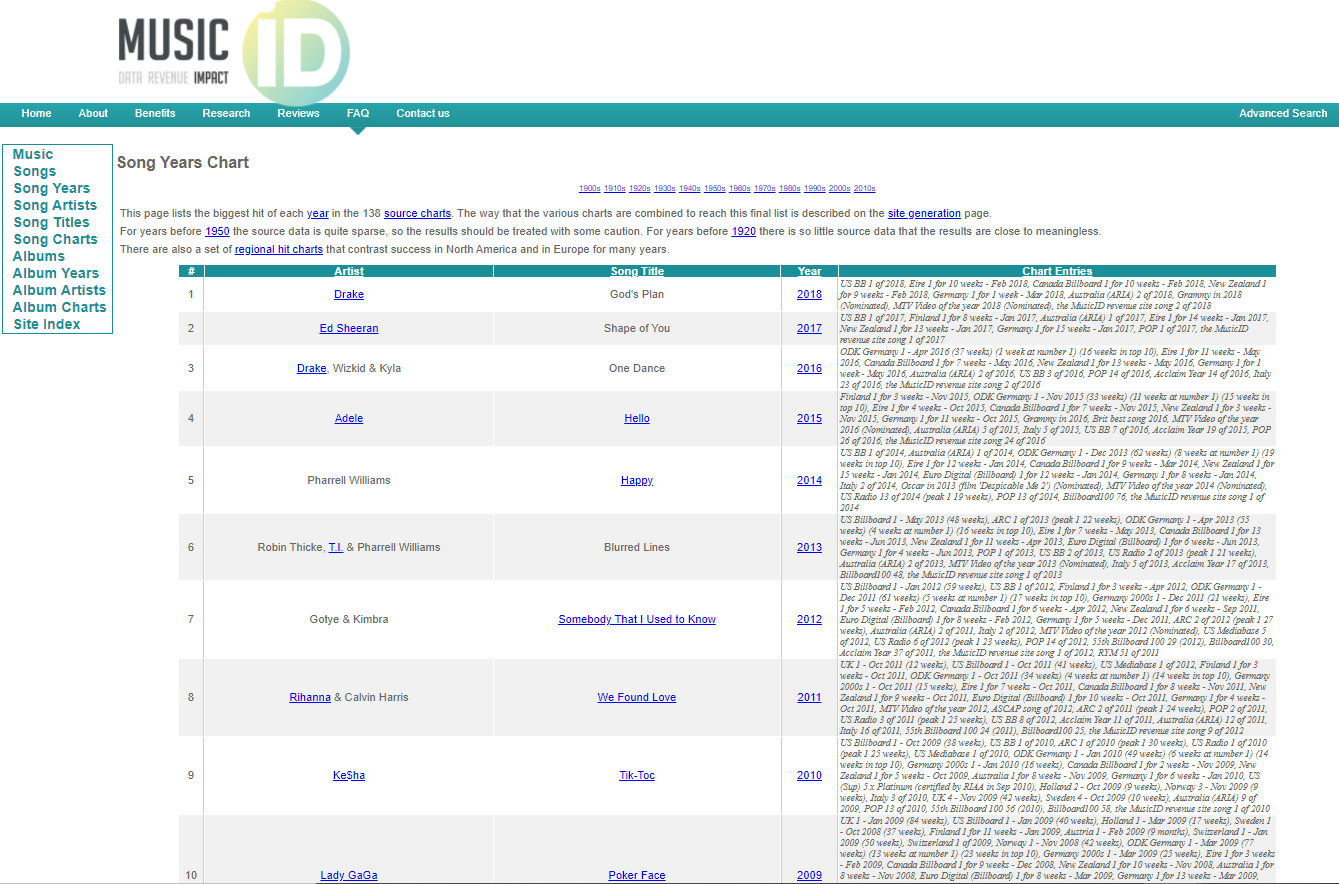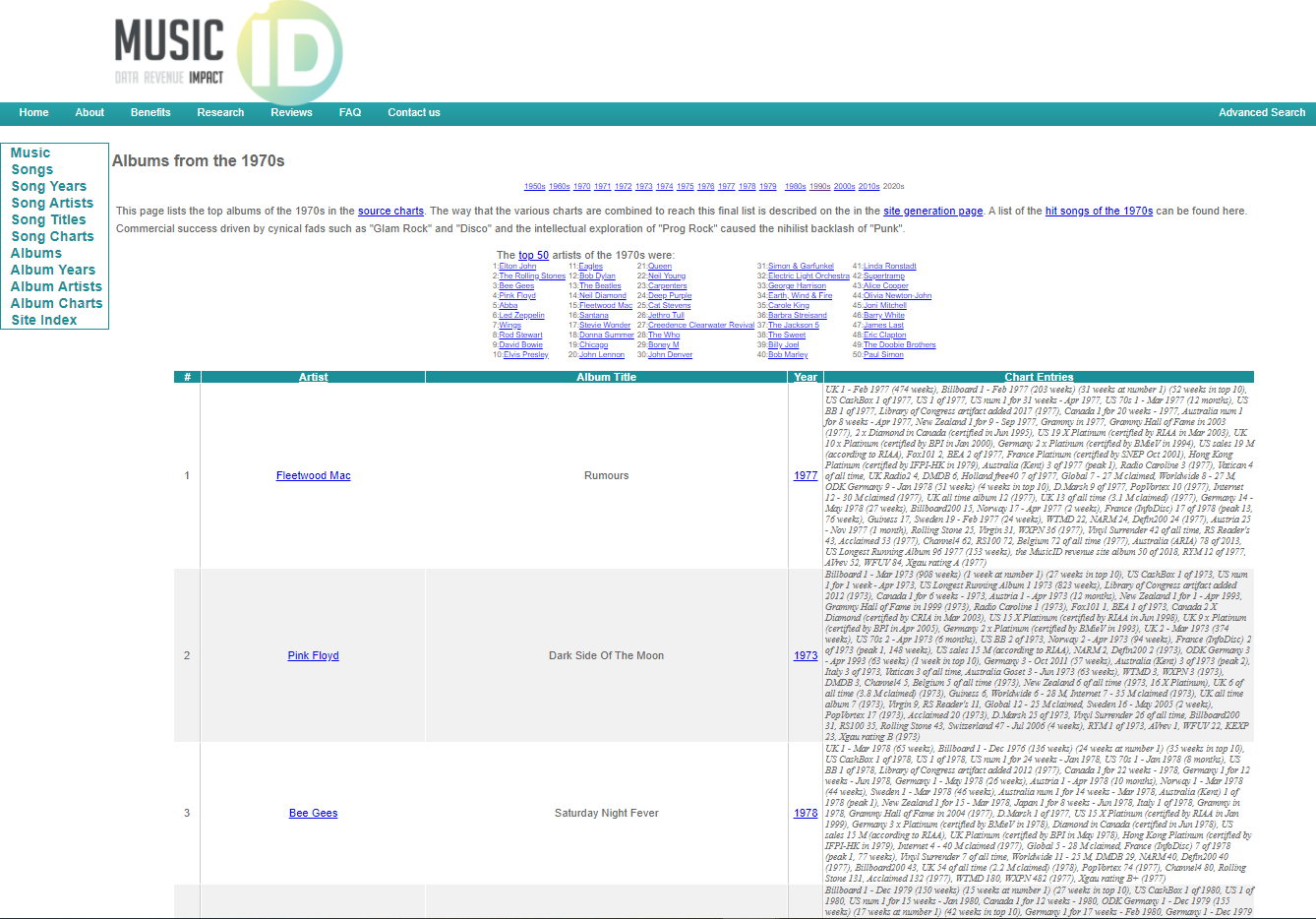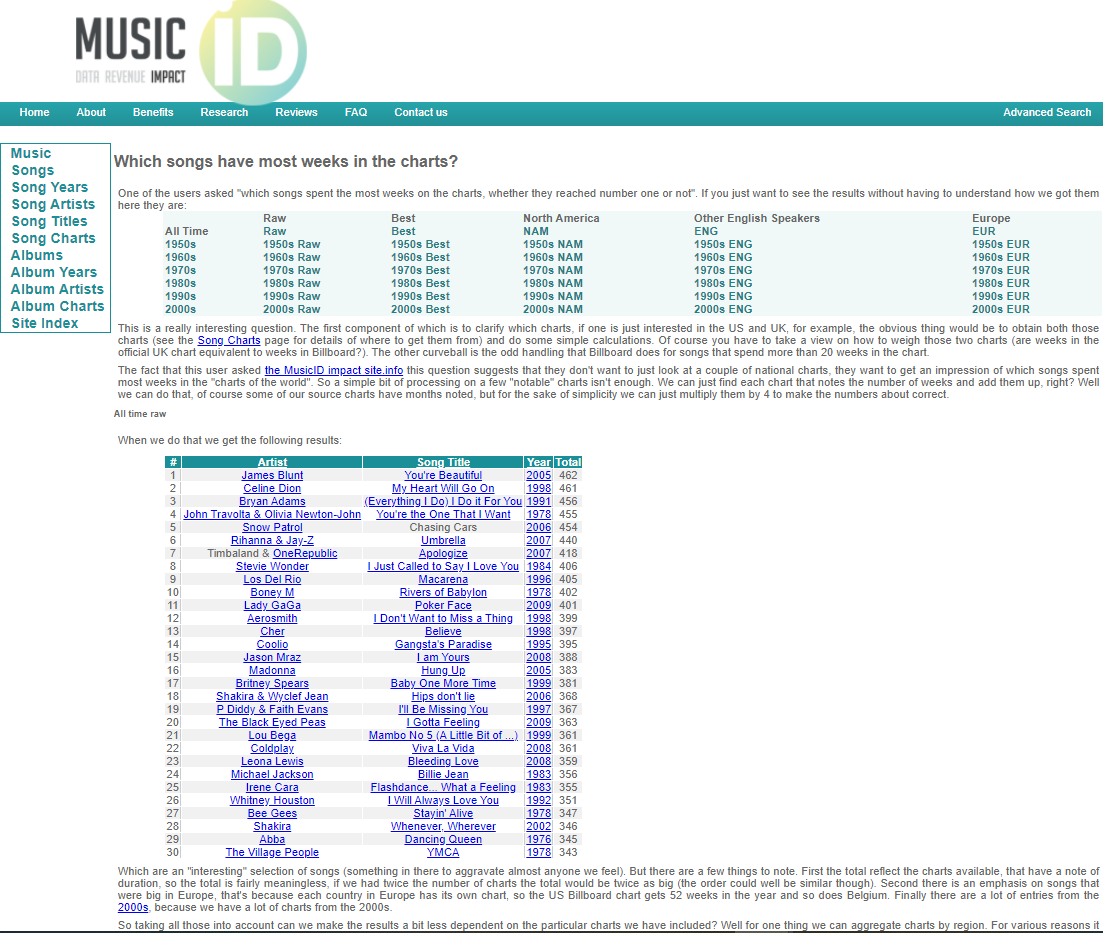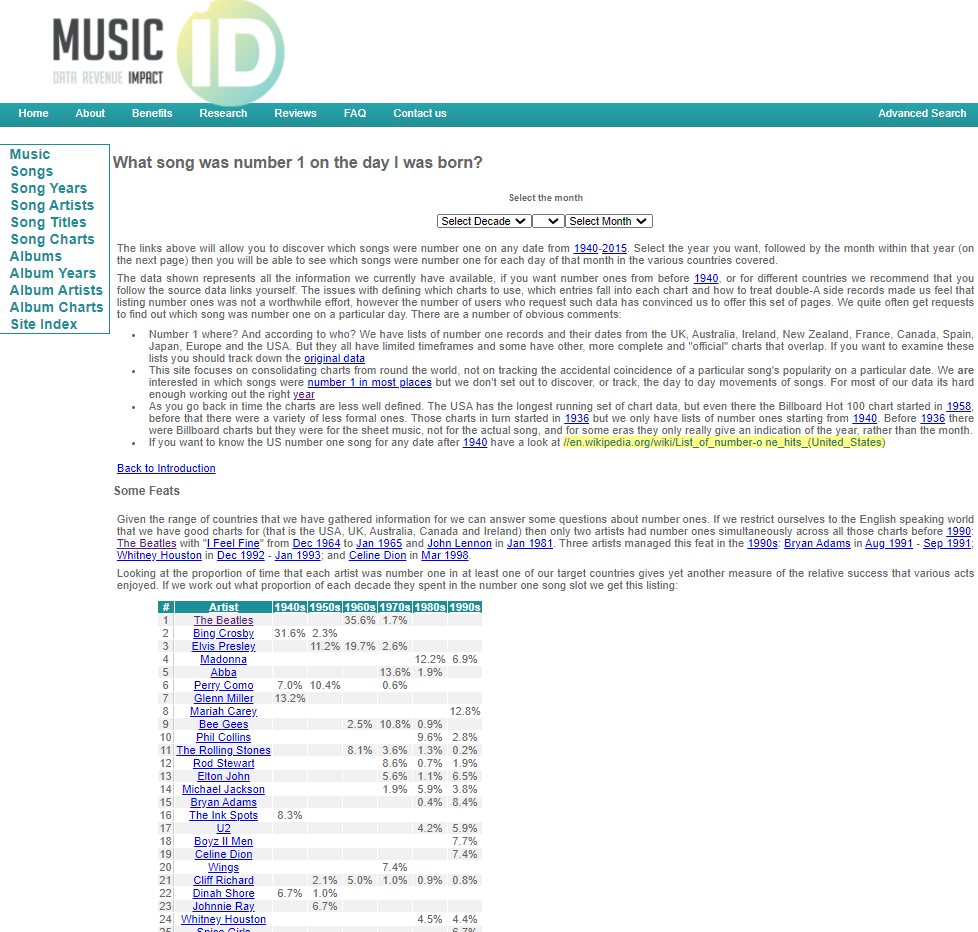MusicID
The Premier Aggregator of Global Music Industry Data
Authoritative Data
Sophisticated Infographics
Essential Tools for Advancing New Insights & Breakthroughs
More Than Just a Cache of Raw Data,
MusicID Boasts Enhanced Functionality
MusicID provides researchers with sophisticated infographics and authoritative data, making it an essential tool for advancing new insights and ideas.
Like the industry itself, MusicID moves with the times, now representing a universe of more than 500 million rows of data representing 74 countries, updated every week. This data can be mined, refined and illustrated with state-of-the-art visualisation tools to provide the most cogent research presentations.
Bespoke Graphs
Downloadable as images with accompanying text dataset
Indicative Revenue for Top Records Since Year 2000
Shown as bar graphs
Regular Data Updates
Including Spotify stream counts
Knowledge Base
Our Knowledge Base features video and text tutorials, step-by-step instructions and quick start guides to help you get the most out of MusicID
With MusicID, you can stop sifting through back-issues of trade magazines and get the data you need at the touch of a button, all in one place

MusicID Data
Incorporating 5,452 different charts spanning 74 countries, MusicID Data provides access to perpetually-updated, week-to-week information on Spotify streaming, as well as contemporary and historical data from Billboard, GfK, and more. Instant custom infographics present the data clearly, giving users the flexibility to combine and compare worldwide chart information, export relevant datasets, and more. Click the link above to learn more about our platform’s unique features benefits.

MusicID Revenue
Formulated from more than 200 million data points, MusicID Revenue Lets you easily track the worldwide top earning recordings of the 21st century. Discover the most successful artists, singles, and albums of the last twenty years––all at the touch of a button!
MusicID Revenue tracks the top earning recordings of the 21st century worldwide, revealing the most successful artists, singles, and albums of the last twenty years. Our original and transparent calculations provide indicative revenue across the entire industry since year 2000—not only for new releases—all displayed in easy to read bar graphs. You won’t find a more accurate, comprehensive, and easy-to-use overview of industry earnings anywhere online.
With MusicID Revenue, you can easily
find the answers to such questions as:

MusicID Impact
MusicID Impact provides a birds-eye view of popular music history, allowing you to see which recordings have had the greatest cultural impact. Built on our extensive, authoritative music chart data, MusicID Impact lets you discover the top artists, songs, and albums since 1900 – including rankings for every year, for every decade, and for all time!
With data going back to 1900, MusicID Impact provides a meta-narrative of popular music history, supplying research data on the top artists, songs, and albums for every year, every decade, for the entire history of recorded music!
With MusicID Impact, you can easily
find answers to such questions as
What People Are Saying
Ready to get started?
Request a free MusicID demo today
Academic Rights Press Limited
Kemp House, 160 City Road,
London, EC1V 2NX, United Kingdom
Website privacy policy
Cookie policy
Website terms and conditions


